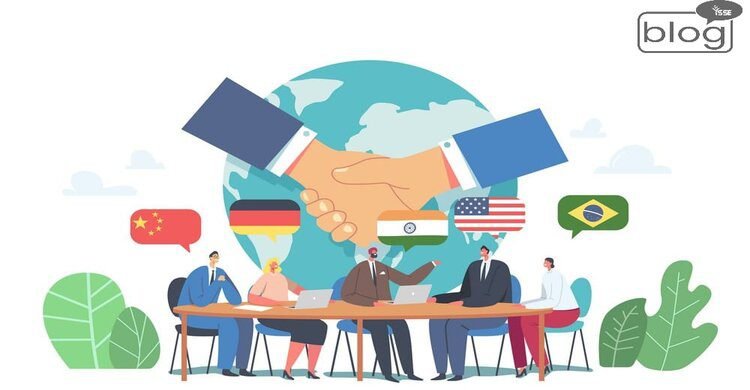Today’s world is connected by people from various cultures and backgrounds and international education helps them to learn from each other, become responsible global citizens and achieve their goals in a diverse and dynamic job market. Technology has transformed international education by creating a virtual global classroom where people can work together and share their ideas across countries. By using technology, teachers can make connections across the world, create interactive and meaningful learning experiences that increase the educational possibilities for their students.
- Transforming the Learning Experience: Harnessing Technology in International Education
Technology has revolutionized how we learn including international education. Digital tools and platforms have opened countless new learning opportunities that encourage interactive engagement, customized instruction and improved accessibility.
- Interactive Online Learning
Virtual classrooms and online learning platforms have revolutionized international education, providing a globalized classroom where students from every continent can take part in both synchronous and asynchronous learning experiences. They provide real-time interaction among classmates for discussions, group projects and collaborative activities – creating the opportunity for real world collaboration that enhances collaborative learning activities.
- Personalized Learning
With the help of technology, educators can now customize their teaching according to the unique needs and preferences of each student. They can use tools that are powered by artificial intelligence, platforms that adjust to the student’s level of learning and data analysis that show how the student is progressing and learning. These tools help educators to design learning paths that suit each student best.
- Enhanced Accessibility
Technology has broken down barriers to education, making education more accessible for students with disabilities or living in remote or underserved areas. Digital tools such as screen readers, text-to-speech software and online learning platforms have created inclusive environments which address a range of learning styles.
- Promoting Cultural Understanding and Collaboration
Tech has given educators a powerful tool for cultivating cross-cultural understanding and collaboration among students from diverse parts of the globe. Online communication tools, virtual exchange programs and collaborative projects enable students to meet one another, share perspectives and learn from one another’s cultures.
- Virtual Exchange Programs
Virtual exchange programs have emerged as an invaluable means for fostering cross-cultural understanding. Connecting students from various nations across online platforms, these programs enable real-time conversations between them as they collaborate on projects together and share cultural experiences.
- Collaborative Projects
Technology has allowed collaborative projects that bring students from different nations together to work towards shared goals, giving students an opportunity to develop intercultural communication skills, solve problems together and recognize cultural diversity.
- Expanding Educational Opportunities
Students all over the world can now learn from the best teachers and courses, no matter where they live. Technology has removed the barriers of distance and location that used to limit educational opportunities.
- Online Courses
Students can learn from different places in the world through online courses which are convenient and low-cost ways of getting education or improving skills. They do not have to be physically present in the same location as the institutions offer these courses.
- Distance Learning Programs
Distance learning programs offer an ideal alternative to traditional brick-and-mortar education, enabling students to study at their own pace from the convenience of home. Distance learning programs offer students with busy schedules or those living in remote locations the freedom and convenience they require for effective education.
Global classrooms that use technology are changing how people learn worldwide. They bring together students and teachers from different countries, helping everyone understand each other better and promoting global citizenship. By using digital tools, both educators and students can connect with others around the world, share ideas, access a lot of information, and make learning more exciting. This kind of education prepares individuals to succeed in a world where everything is connected. As technology keeps getting better, its impact on international education will only grow, creating a global education system where students become citizens of the world, working together to make our planet more connected and interdependent.
To read more blogs click here.
Writer
Jannatul Afia Priya
Intern, Content Writing Department
YSSE

